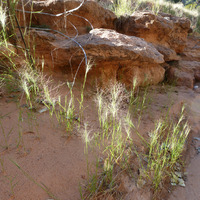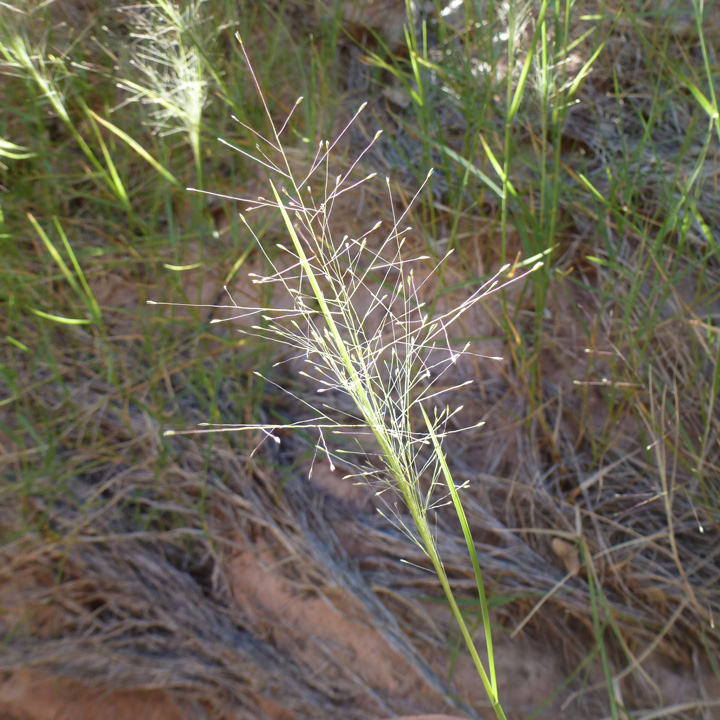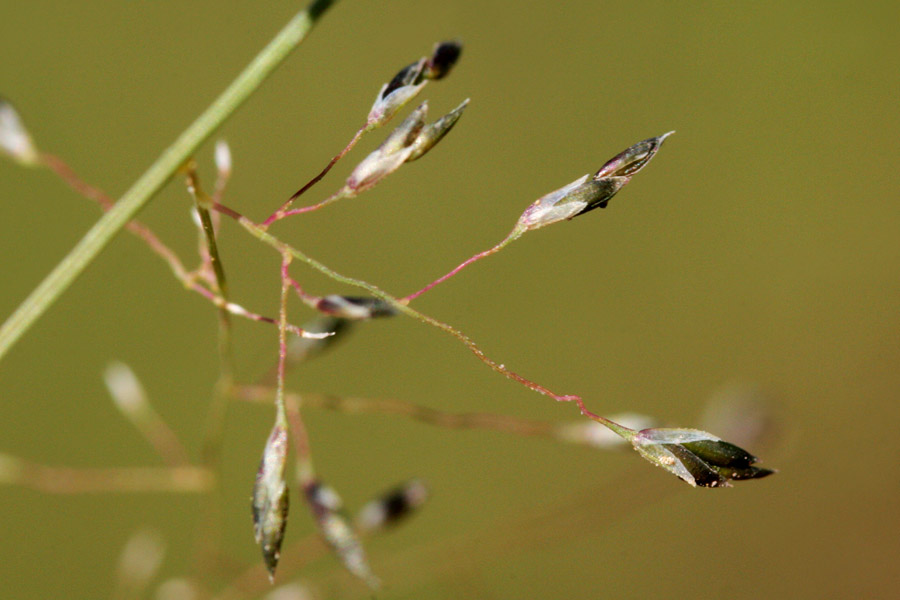|
|
 Plants Max Licher @http://swbiodiversity.org, Usage Rights: Creative Commons Attribution-ShareAlike (CC BY-SA) |  Seedhead Max Licher @http://swbiodiversity.org, Usage Rights: Creative Commons Attribution-ShareAlike (CC BY-SA) |  Spikelets Patrick Alexander @http://swbiodiversity.org, Usage Rights: Creative Commons Attribution-ShareAlike (CC BY-SA) | | | |
|
| | |
Origin: Native Season: Warm
Habitat Description: Found in moist meadows, along sandy washes, canyon bottoms, grassy slopes, rocky to sandy slopes and around seeps and hot springs. This grass is a weed of railroad ballast, waste soils, industrial areas, and along expressways.
Plant Communities:Riparian, Disturbed Areas
Elevation: 4000 - 6500 feet
Desc:
M. asperifoliais distinct in being a rhizomotous perennial bunchgrass with open, sparsely-flowered and wispy awnless seedheads.
The source of the common name "scratchgrass" becomes evident if you run your hand along the blades.
Identification Notes: Perennial 4 to 24 inches tall; diffused seedhead; long slender spreading branches; spikelets awnless, less than 1/8 inch long; scaly rhizomes and occasional stolons; flat blades, somewhat roughened below; stems are erect, branch at the base.
Grass Type: Perennial bunchgrass Rhizomes: Y Stolons: Y
Large Dense Clump (> 2 feet): N Bushy (highly branched): N
Height with Seedheads: 12 to 24 inches
Seedhead Structure: Branched - open and spreading Seedhead Droops: N
Flowering Period: Jul - Oct
Number of Flowers per Spikelet: One-flowered Spikelets One-sided: N
Awns: Absent Three Awns: N Awns Bent: N
Flower and Seedhead Notes: Seedhead is 2 to 8 inches tall and branched. The hair-like primary branches are 1 to 4-3/4 inches long with the lower branches spreading 30 to 90 degrees from the main axis. Spikelets are purplish or grayish.
Blade Hairy:
Y
Blade with White Margins:
N
Blade Cross section:
Flat
Blade Notes:
The blades are flat, 3/4 to 2 inches long and less than 1/4 inch wide. Blades are rough, especially on the edges.
Sheath Hairy:
N
Tuft of Hairs at top of Sheath or Collar:
N
Ligules:
Membranous and hairy
Auricles (Ear-like lobes at collar area:
N
Forage Value:
Due to the low, creeping characteristics of this plant and coarse texture of the leaves, this grass is of little value as a forage plant for cattle.
|
|